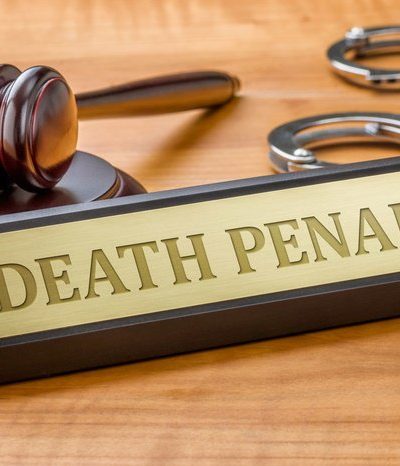Lethal Fluctuations: The Death Penalty in Asia

The Malaysian government last year expressed a surprise change of heart on a policy long held dear; it would reconsider the death penalty. The case of Muhammad Lukman, sentenced to death in August for the purchase and sharing of medicinal marijuana, did much to stimulate outrage. On October 10th, law minister Liew Vui Keong announced that it would be abolished. Doing so would leave such last bastions as Vietnam, Singapore, Thailand and Indonesia.
In other parts, capital punishment is either continuing its grim dance (in Singapore, usage is on the rise; in Vietnam, it remains consistently high) or getting back in business, singing its deadly siren song. Killing people in the name of state vengeance is becoming vogue even as it retreats in other contexts. The Kingdom of Brunei, despite having it on the books since the days of being a British protectorate, is only now contemplating, in all seriousness, putting people to death who have a liking, or find themselves, committing sodomy. (Lesbian reverie will see a penalty of 40 lashes and a potential prison sentence of 10 years.)
In the Philippines, an aggressive, insistent President Rodrigo Duterte has proven something of a trail blazer, scorching his way through human rights quibbles and filling the morgues. In July 2017, he explained the rationale for using capital punishment without mercy in his second State of the Nation Address (SONA).
“It is time for us to fulfil our mandate to protect our people. Tapos na’yan. For so long we have to act decisively on this contentious issue. Capital punishment is not only about deterrence, it’s also about retribution.”
Duterte’s view of the penal code is stripped of ornate reasoning. It is one of vengeance and pessimism, marshalled against any hope of restorative justice or therapeutic reform. The law, a legacy of the Spaniards and then translated into English, with revisions, “is the essence of retribution.” The attitude there involved “an eye for an eye, a tooth for a tooth. You took life, you must pay with it. That is the only way to even. You can’t place a premium on the human mind that he will go straight.”
The result has been one of carnage: over 5,000 deaths between July 1, 2016 and November 30, 2018, if you believe the official figures, or the greater number of 12,000, if you believe in activist assessments. This pool drew on a total of 164,265 arrests (“drug personalities”, no less) as part of 115,435 anti-drugs operations.
In Sri Lanka, the interest has also been rekindled, inspired, in no small part, by the blood lust of the Philippines leader. The Sri Lankan President Maithripala Sirisena felt moved by Duterte’s efforts to combat drug trafficking, a true “example to the world”. “I hope to carry out the first hanging within a month or two. I appeal to human rights organisations not to try to pressure us on this decision.” From a prison population of 1299 facing capital punishment, 48 are convicted drug offenders.
The Sri Lankan case had a twist. While Sirisena had announced an end to the 43-year moratorium on capital punishment for drug-related crimes, complemented by Justice Minister Thalatha Atukorale’s clearing of the decks for five drug convicts to be dispatched, a reality started to sink in: the state lacked the necessary trained instruments of death. The moratorium had been so lengthy so as to make the system rust. Expertise in breaking necks, in other words, was lacking. The last executioner to reach retirement age left the post in 2014. Three others have spent short stints gazing at unused gallows without rewarded effort.
Advertisements to fill the vacancy were duly put out for two hangmen. In the Daily News, a call out for applications with “an excellent moral character” was made. They would also have to pass a test of “mind and mental strength”.
Such debates about the formalised death penalty in the Philippines and Sri Lanka avoid the obvious point. Where to with the death squads who have donned extra-judicial uniforms? Duterte’s encouragement of police brutality and extra-judicial killings (“my only sin,” he claims) is the stuff of legend. Sri Lanka can also count itself as an enthusiast in the extra-judicial killing game. In some states, the death penalty, dormant or otherwise, is a reminder about how state operatives go about their business of sowing terror when they prefer to avoid courts.
While the death penalty has, at its core, a flawed philosophy, its attractiveness often lies in its sheer conclusiveness. Such decisions are final, doing away with the problem. They are economic – a corpse is less of a strain on the public purse than a living inmate. To that end, imposing the death penalty can result from trivial impulses.
Such monstrous triviality was recently in play in Thailand. In Phuket, the airport authorities have been entertaining the possibility of grave punishments for those taking “selfies” on Mai Khao Beach, a site known for sightings of low, incoming aircraft.
“People and tourists will not be allowed to enter this area to take photos,” an emphatic Phuket airport chief Wichit Kaeothaithiam has claimed.
He issued further warnings: no drones, no shining lights, quite frankly nothing at all to distract incoming planes, would be tolerated. Violating the provisions of the Air Navigation Act was a matter, quite literally, of death. “The maximum penalty is the death sentence.” Distractive idiocy, the authorities in Phuket suggest, is no excuse.
*
Note to readers: please click the share buttons below. Forward this article to your email lists. Crosspost on your blog site, internet forums. etc.
Dr. Binoy Kampmark was a Commonwealth Scholar at Selwyn College, Cambridge. He lectures at RMIT University, Melbourne. He is a frequent contributor to Global Research and Asia-Pacific Research. Email: [email protected]

